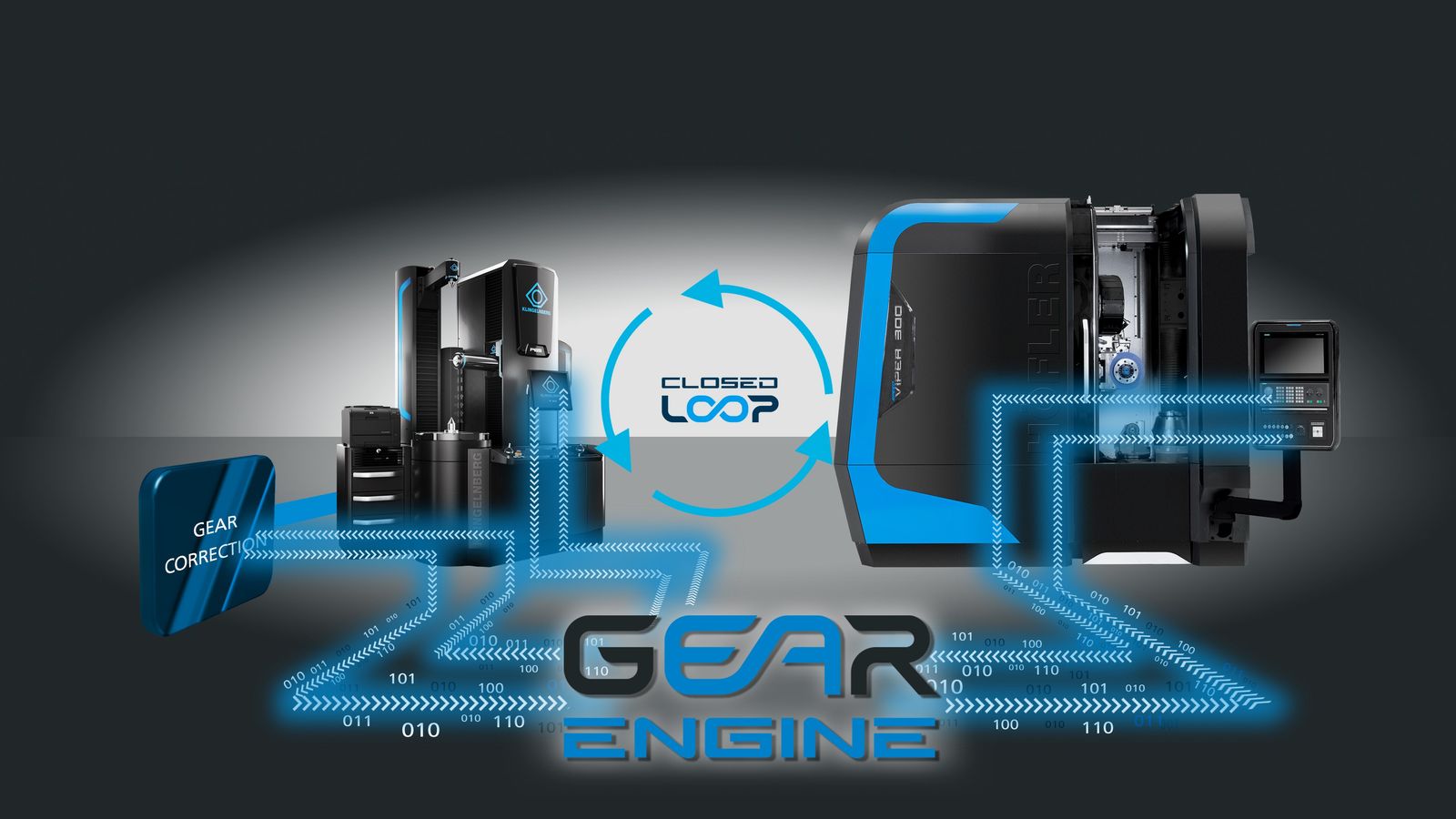Beyond Closed Loop but Lean
A perspective on data driven manufacturing processes from Klingelnberg
Introduction
The continuously increase of electric vehicles is well known and manufacturers are adapting their shopfloors. The shift towards e-mobility has consequences throughout the whole supply chain since it has brought a fundamental change in both - the design and quality requirements of a car’s drivetrain. The number of gears in the gearbox has been significantly reduced, while the noise behavior of the gearbox has gained even greater importance as a decisive quality characteristic. This has given rise to the requirement for a robust generating grinding process as well as 100% quality testing of the gears before they are installed in the gearbox. The minimization of the number of complaints during end-of-line testing is the primary goal. With the Speed Viper and R 300 machines by Klingelnberg there are profound hardware solutions for generating grinding and roll testing. This is an important success factor for quiet gears.
But when it comes to an early identification of noise problems in the drivetrain one has to take data analytics and its integration in the manufacturing process into account. The big vision here in particular is preventive quality. By evaluating sensor data of the machining process, it promises to predict whether a gear is ok or not ok. And if not, this approach comes with the right tools to have a quick result when searching the root causes of part issues. The goal is to increase the output of the grinding machines as well to reduce cost per part significantly. Additionally, the number of parts, which go into the roll testing process, is reduced.
On the way to realize the vision of predictive quality for gear production this contribution lists some important milestones. As we all know, many challenges must be overcome as we move toward such an advanced Industry 4.0 applications. One of the more challenging tasks is to continuously acquire and analyze data taken from the machining process of the machine tool. Did you know that a Klingelnberg generating grinding machine generates up to 1.5 GB of data per hour? This is roughly equivalent to two tons of printed paper. In addition to these IT challenges, detailed knowledge of the design and control-related conditions of the machine tool and the specific toothed gear machining process is required. Otherwise, the data analysis will only reveal banal correlations and no valuable causations. Indeed, added value can only be generated through a combination of IT technology, control engineering, and grinding process knowledge. We cannot expect out-of-the box solutions here and we need joint ventures between machine tool providers and their customers to get there.
Closed Loop 2.0
A common concept in the gear industry is the Closed Loop between measurement machines and grinding machines. Measurement results of parts are used to calculate corrections of the movement of the grinding machine. By doing so, geometrical imperfections of ground parts caused by differences in temperatures or material inputs in a mass production process can be handled. This concept is depicted in Figure 1 by the example of the Closed Loop concept between Klingelnberg machines for generating grinding of cylindrical gears.
When it comes to phenomena on a microscale like waviness, it gets more interesting and out of the box solutions like the one mentioned before do not exist. Surely a roll tester identifies these effects. You will get suspicious amplitudes in the spectral analysis. Of course, the software of the Klingelnberg R 300 helps you very elegant to identify potential problems. The problem here is to identify the root causes of amplitudes since the grinding machine’s capacity is very limited in avoiding the creation of a certain waviness. The central question here is which dynamic system in the grinding machine has caused a certain micro scale effect on the flank. The quicker you find the answer the sooner you return to a stable production process.







